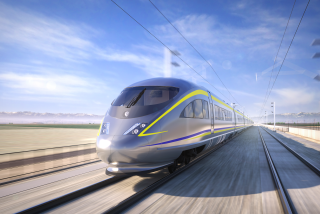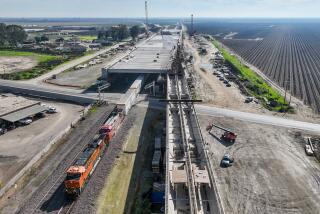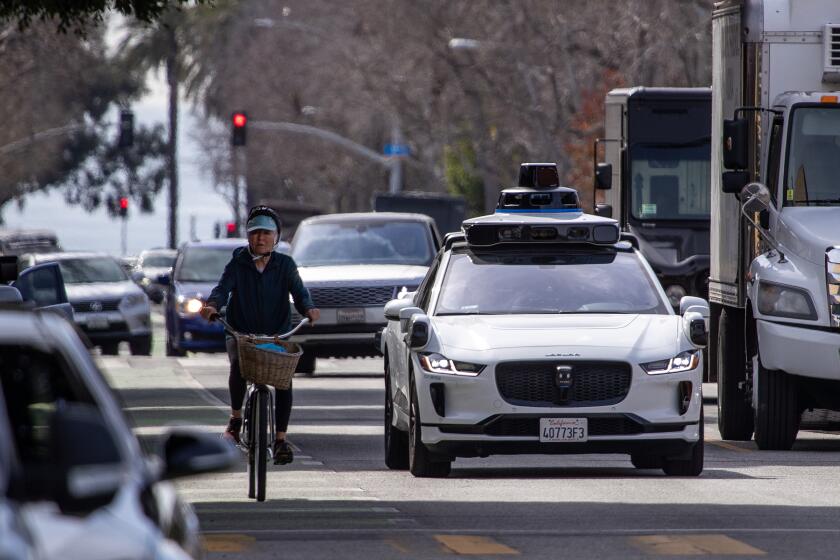High-Speed Rail Proponents Get a Boost : Transportation: Problems with maglev systems are only transitory, federal railroad chief says.
- Share via
ANAHEIM — The Bush Administration is more interested in high-speed rail systems than the Reagan Administration was, and advocates of such systems should not become discouraged by occasional reversals, Federal Railroad Administrator Gilbert Carmichael said here Monday.
Carmichael, addressing the Eighth International Convention on High-Speed Rail at the Disneyland Hotel, said he views problems encountered by would-be developers of magnetic-levitation rail systems in Florida and between Orange County and Las Vegas as transitory in nature.
As for the California-Nevada line, he sees “a five-year deferral (of construction) rather than a three-year (building) plan” as originally contemplated, the federal official said.
“Everyone is skeptical of maglev, we know that,” he said. “If it were easy, everyone would be doing it. It’s not easy yet.”
While he added that “some projects are not moving forward as we would wish,” he said the Administration wants to help prepare the way for the day when progress can be made by surveying routes, contributing to studies and preparing enabling legislation.
As head of the agency charged with authorizing the German-developed maglev technology to serve the United States, Carmichael noted that he will have members of his staff on site this summer observing German testing of the trains, an indication that U.S. certification could rapidly follow German approval.
And, he noted, the federal government recently agreed to contribute $660,000 toward a $1-million study of a proposed 19-mile maglev line between downtown Pittsburgh and the Pittsburgh Airport.
Elsewhere in the United States, he said, Texas is “way out front” in exploring the potential for a steel-on-steel, high-speed line similar in concept to more conventional high-speed rail technologies in service in Europe.
He also pointed to studies under way for high-speed service between New York and Boston as a sign that “the Administration now considers intercity rail service an integral part of a coordinated transportation system.”
Carmichael called for support of Amtrak as a step on the way to faster service, and he urged support of legislation pending in Congress that would open up highway rights of way to use for maglev and other high-speed rail projects.
“A prospering Amtrak is one of the best assets to maglev and other advanced technologies,” he declared, not a rival or an impediment to them.
The rail administrator said that he will soon be in Atlanta to boost a planned intermodal station linking Amtrak intercity service to the local subway before the 1996 Atlanta Olympics. The federal government will put up seed money for this project.
In a number of cities, he added, “We are moving toward the train-meeting-plane concept” of subways or surface rail taking passengers to and from airports and municipal locations. But, he conceded, “when it’s going to be here, I don’t know.”
He said developments of every kind of better train service would be easier were they more enthusiastically supported by private investors.
At a news conference, Carmichael joined Orange County Supervisor Don R. Roth, chairman of the California-Nevada Super Speed Train Commission, and other officials in acknowledging financing and other problems slowing progress on the Anaheim-Las Vegas line, but he also deplored what he termed “negativism” of the press.
The three-day convention, which brought some high-speed train developers from France, Germany and other foreign countries, is being attended by several hundred persons.
More to Read
Sign up for Essential California
The most important California stories and recommendations in your inbox every morning.
You may occasionally receive promotional content from the Los Angeles Times.













